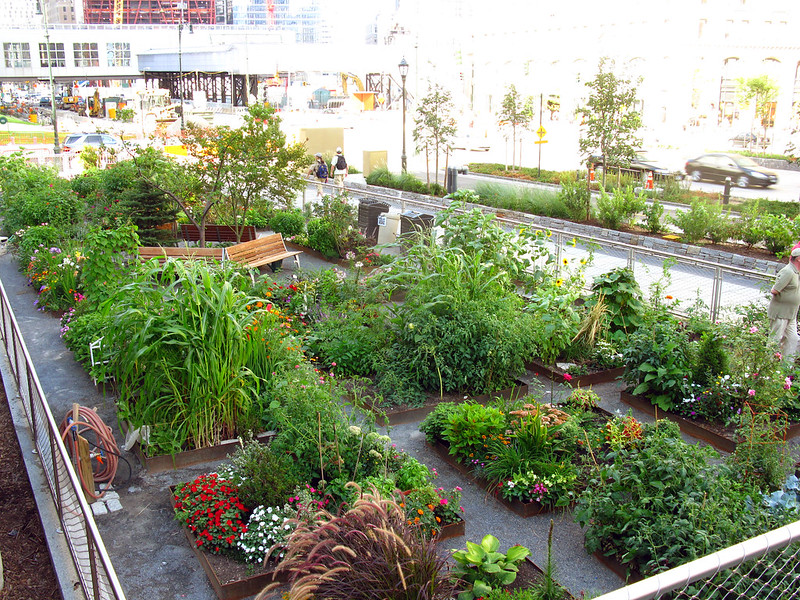The Ultimate Guide To City Blooming
The Ultimate Guide To City Blooming
Blog Article
Some Known Details About City Blooming
Table of ContentsSome Known Questions About City Blooming.6 Simple Techniques For City BloomingCity Blooming Fundamentals ExplainedFacts About City Blooming RevealedSome Known Facts About City Blooming.
Intrigued in growing food for sale in the City of Chicago? Below is a list of regularly asked concerns pertaining to the regulations and laws that farmers must think about when planning an urban agriculture job.
The zoning change does not modify any other codes dealing with composting, building authorizations, buying or renting City owned residential property, service licenses or ecological contamination. There are existing codes that manage these concerns and they remain in full result and might apply to your task. Neighborhood gardens are usually owned or taken care of by public entities, public organizations or community-based organizations and maintained by volunteers.
Urban ranches expand food that is meant to be offered, either on a nonprofit or for-profit basis. Due to their industrial purpose, city farms require a service permit. Yes. A community yard is permitted to offer excess generate that was expanded on website if the sales are accessory or secondary to the yard's key purpose defined above.
What Does City Blooming Do?
Composting is allowed but only for plant product that is generated and used on website. The amount of compost product can not exceed 25 cubic lawns at any kind of given time according to the criteria in 7-28-715 of the City's Municipal Code. Yes. Since the dirt at many brand-new yard sites requires changing, garden compost, soil, wood chips, or other materials can be acquired to create or boost the expanding space - City gardening.

If a structure license is required after that the hoophouse will be thought about an accessory building. You can locate out more concerning the building permit needs by calling the Division of Structures. The 25,000-square-foot dimension limitation is meant to stop a single neighborhood garden from dominating a given block or detracting from the block's existing domestic or business personality.
The restriction does not apply to gardens situated in Public Open Room (POS) districts. Can there be more than one neighborhood garden that is 25,000 square feet on a single block? Fencing is not called for, however, yards that have big car park areas may be called for to set look at more info up secure fencing or other landscaping functions.
The Ultimate Guide To City Blooming
B1 & B2 areas need that all business use activities be carried out inside your home. R areas restrict business activity. The regulations mirror the purpose and intent of the Zoning Code. Is secure fencing needed for urban ranches? Yes. Fencings may be called for, along with landscaping and testing, for particular parking locations and outdoor job or storage areas depending upon area and the particular task happening.
Urban ranches call for structure authorizations and zoning approvals prior to building and construction (garden care). Other types of city review may be required depending on details structures, activities, size, landscaping, licensing, public heath and stormwater management problems.
Yes. The kind of certificate is determined by what is occurring at the site. The Division of Company Matters and Customer Security can assist establish the specific kind of business certificate that's called for. Yes. Off road car parking is needed for a lot of industrial jobs in Chicago. The called for variety of garage is based on the variety of workers functioning on website and not the square footage of the growing room.
A Biased View of City Blooming

A metropolitan farm can offer compost material produced on site, nevertheless, the procedure must comply with the guidelines in 7-28-715 of the Chicago Municipal Code. Aquaponic systems are permitted indoors on urban farms in lots of zoning areas.
As much as five hives or nests of honey bees may be kept as an accessory use. Beekeepers should sign up with the Illinois Department of Farming. To learn more concerning the recommended zoning amendment you might speak to the Department of Real Estate and Economic Advancement, Bureau of Preparation and Zoning at 312.744.8563.
Farming in cities and metropolitan areas A metropolitan ranch in Chicago. Urban agriculture describes various methods of growing. http://peterjackson.mee.nu/where_i_work#c2252, handling, and dispersing food in metropolitan locations. The term also applies to the area tasks of animal husbandry, tank farming, beekeeping, and horticulture in a city context. Urban farming is differentiated from peri-urban agriculture, which happens in backwoods beside suburban areas.
The Definitive Guide for City Blooming
It can include a motion of organic growers, "foodies" and "locavores", that look for to develop social media networks founded on a common principles of nature and neighborhood holism. These networks can establish using formal institutional assistance, ending up being incorporated into neighborhood town as a "shift town" activity for sustainable metropolitan development.
The a lot more straight access to fresh vegetable, fruit, and meat products that might be realised via metropolitan farming can improve food security and food safety while lowering food miles, causing reduced greenhouse gas discharges, therefore contributing to environment change reduction. A few of the very first evidence of city agriculture comes from Mesopotamia.
Report this page